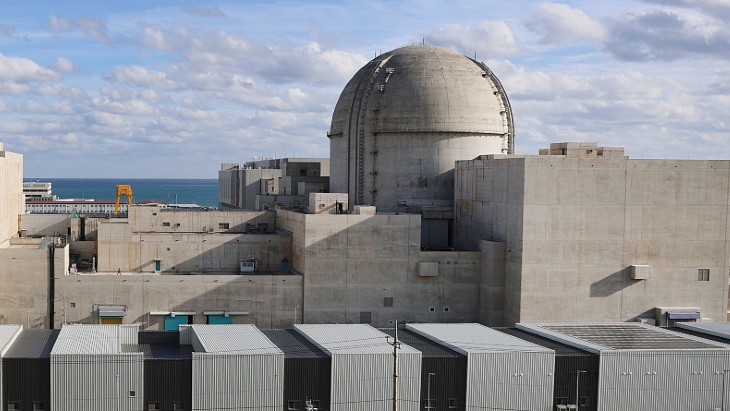A gyrotron is a high-powered linear beam vacuum tube that generates millimeter-wave electromagnetic waves by the cyclotron resonance of electrons in a strong magnetic field.
Thales's gyrotron plays a crucial role in the Wendelstein 7-X stellarator project by providing heating and stabilisation of the plasma, which are essential for reaching the temperatures required for magnetic confinement nuclear fusion.
The Wendelstein 7-X project - the world's largest and most powerful stellarator - not only aims to enhance the fundamental understanding of plasmas, but also to contribute to the development of commercial fusion reactors.
Munich-based Thales is the only European manufacturer of gyrotron electronic tubes. The TH1507U gyrotron was developed in collaboration with the European GYrotron Consortium, which aims to create an autonomous European source of highly reliable gyrotrons. Operating at a strategic nominal frequency of 140 gigahertz, these reactors can also adapt to other frequencies.
"The world record set by our gyrotron marks a significant milestone in the race for fusion and illustrates our commitment to technological innovation and excellence," said Charles-Antoine Goffin, vice president of Microwave & Imaging Sub-Systems at Thales. "This technological breakthrough positions Thales at the forefront of high-power plasma heating solutions, essential for addressing the energy challenges of tomorrow."
After Wendelstein 7-X generated a record plasma in February 2023 (lasting 8 minutes with an energy output of 1.3 gigajoules), the stellarator at the Max Planck Institute for Plasma Physics in Greifswald, Germany, was shut down as planned for maintenance and improvements, including the installation of the new gyrotron. In September, Wendelstein 7-X started a new experimental campaign.

_27335.jpg)



_72306.jpg)


_49562.jpg)





